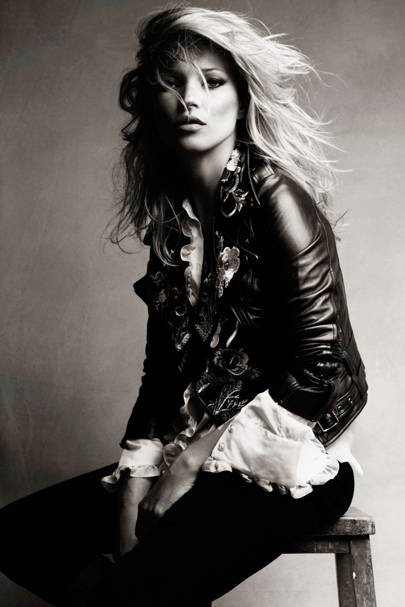The British edition of Vogue is a fashion magazine that has been published since the autumn of 1916. The magazine's current editor stated that, “Vogue’s power is universally acknowledged. It’s the place everybody wants to be if they want to be in the world of fashion" and 85% of the magazine’s readers agree that “Vogue is the Fashion Bible”.


The magazine is considered to be one that links fashion to high society and class, teaching its readers how to ‘assume a distinctively chic and modern appearance’. As a branch-off of American Vogue, British Vogue is a magazine whose success is based upon its advertising rather than its sales revenue.
British Vogue’s current editor-in-chief is Alexandra Shulman, who took the reins in 1992. During her time as editor, the magazine has drawn more than a million readers. Shulman is especially known for developing collector’s issues of British Vogue, such as the ‘Gold Millennium Issue’ where celebrities and supermodels such as Kate Moss can be found on the cover. Shulman is also praised for her use of up and coming photographers like Mario Testino.

Vogue History
During the First World War, Conde Nast, Vogue’s publisher, had to deal with restrictions on overseas shipping as well as paper shortages in America. The British edition of Vogue was the answer to this problem, providing Vogue fashion coverage in the British Isles when it was not practicable to receive it in the usual way. Under the London edition's first editor, Elspeth Champcommunal, the magazine was essentially the same as the American edition, except for its British English spellings. However, Champcommunal thought it important that Vogue be more than a fashion magazine.
Under its second editor, Dorothy Todd, a renowned Vogue editor due to her boldness, especially in her movement to blend the arts and fashion, the magazine shifted its focus from fashion to literature, featuring articles from Clive Bell about art exhibitions in Paris. There were also notable features from noted English writers such as Virginia Woolf and Aldous Huxley. Due to Todd's changes, the magazine lost much of its audience, and she spent only two years as editor. BritishVogue is not believed to have really taken off until after its third editor, Alison Settlex was appointed in 1926.
Under Audrey Withers (editor from 1940 to 1960), the magazine again took a literary direction, and during the Second World War it even took part in reporting the war. In 1944, the American photographer Lee Miller persuaded Withers to send her to Normandy to produce an article on wartime nursing; Miller then followed the Allied advance through Europe, reporting the liberation of Paris and sending a story from Buchenwald.
Vogue Photographer's
The photographers who bring fashion to life in the pages of Vogue are as influential in the fashion industry as the designers themselves. Patrick Demarchelier has been photographing the world's most beautiful women for Vogue for over 30 years.

As one of the magazine's most prolific cover photographers, he has photographed models, actresses, singers and even royalty - the latter thanks to his role as Diana, Princess of Wales's personal photographer.
Legends like Richard Avedon, Guy Bourdin, Helmut Newton, and Irving Penn paved the way for the greats of today, challenging the fashion world to accept new ideas of sexiness, femininity, and masculinity. Most of the photographers on this list admit to or demonstrate being inspired by them in some way.
1950's Vogue Cover
This is the image I am redoing in a modern way.

Erwin was a photographer and artist born in Germany. He was best known for his fashion photography published in Vogue and Harper's Baraar in the 1940's and 1950's.
No comments:
Post a Comment